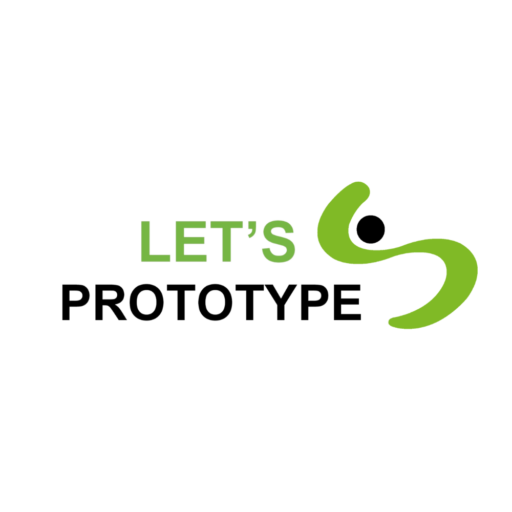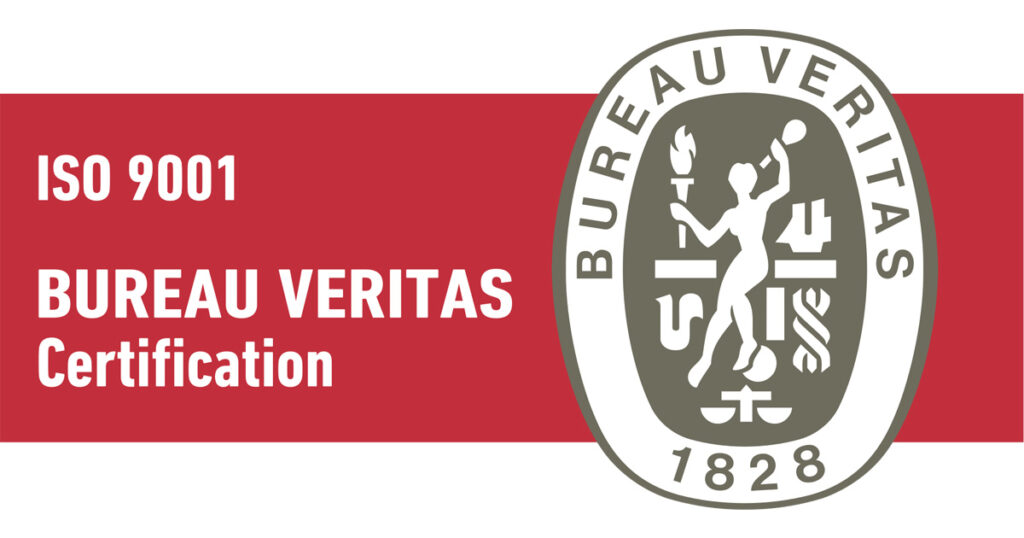Steps for the products development
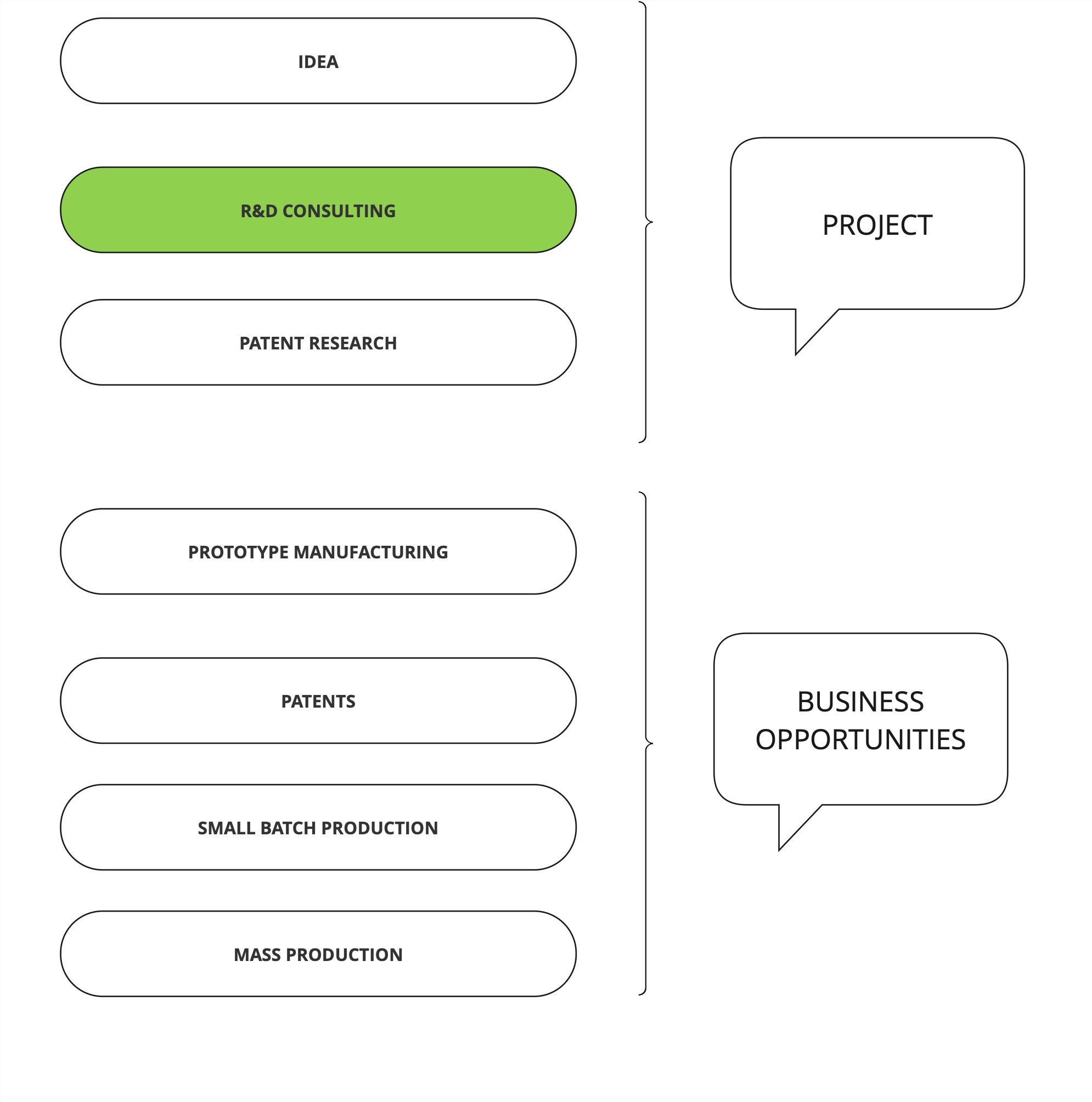
El products development innovadores es un proceso largo, caro e intensivo en tiempo y energía.
Not understanding the process for developing innovative products, its logic, and the order of its steps can jeopardize its chances of success.
The manufacturing of a product is not an isolated process but a chain of challenges that make up the cycle from developing an idea to the manufacturing of products.
On this page, you will find a comprehensive product development guide, where we will help you form a global vision: from the invention idea to the manufacturing of the product.
10 Key Steps in Product Development
- Innovative Product Ideas
- Background Research for an Idea
- Engineering Projects to Invent the Invention
- Prototype Design and Manufacturing
- Registering Invention Patents
- Manufacturing Prototype Pre-Series
- Commercial Testing of New Products
- Securing Funding for Product Development
- Industrial Manufacturing of Products
- Product Sales and Business Growth
Step 1: Idea Definition
Invention ideas are conceptual, unvalidated solutions to specific existing problems in the market.
All processes in the development of an innovative product start with a great idea.
New invention ideas are the initial spark in the product development process. However, the idea itself holds no intrinsic value.
- Ideas are not patentable.
- Ideas have no intrinsic value.
- Ideas are not for sale.
The value of ideas depends on the action, decisions, investments, and dedication of inventors in their development.
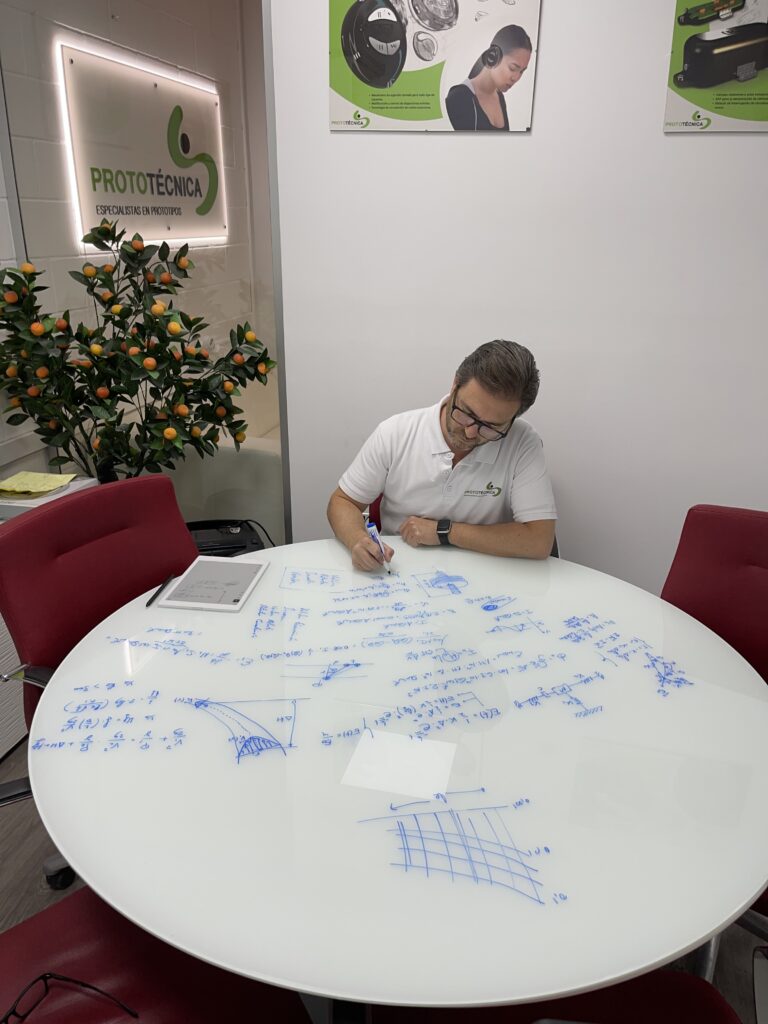
What is an idea?
Product ideas are structured thoughts about possible solutions to a problem identified within specific customer segments. The innovative idea is not the invention. The idea defines "what" we want to achieve, while the invention defines "how" we can achieve it.
How much is a good idea?
Nothing! Ideas for new products are worth €0. What truly has value is the development you’re able to achieve from that idea.
For example: I have an idea that will make space travel more affordable so that many people can enjoy this experience. You might even start imagining what the spacecraft will look like.
Until the idea becomes an engineering project with rigorous validations, its value is close to €0.
Can I patent an idea?
Ideas cannot be patented.
It is a very common mistake to try to protect innovative product ideas without having reached a stage of maturity in engineering and prototyping.
Patenting an innovative idea too early will only allow other inventors and companies with resources to be inspired by your initiative and start a product development process that could lead to significant improvements on your initial idea.
How do I know if my idea is good?
Customers are the only ones who can truly validate if your idea is good enough. For this reason, you need prototypes that allow you to interact with customers as early as possible.
If intellectual property experts were fortune-tellers, they would already be focused on developing their own products.
Inventor, trust your instincts and passion, and test your invention in the market as soon as possible. We can help you.
How do I know if an idea already exists?
There are two sources or methods to demonstrate that the idea does not yet exist:
- Search the internet to see if products similar to your idea already exist.
- Conduct a background study to identify patented products that may impact your idea.
How to Develop an Idea for an Innovative Product?
If you have an idea for a novel invention or innovative product, the best thing you can do is to educate yourself and study before taking the first steps. Understanding the order of the steps to develop products will help you make better decisions.
Step 2: Background Research. The Spark for Product Development.
Meaning of Background Research
The background research is the mandatory investigation process that we must carry out before starting the development of innovative products.
Background research relies on three research methods:
- Semantic Study
- Code-Based Study
- Competitor Study
If you are interested in conducting a free background research on your own, we encourage you to read the previously referenced guide on conducting background research.
How much does a background study cost?
The background study can cost between €100 and €3,000. The price difference reflects the number of hours that will be dedicated to the patent study. The main advice before hiring a patent background study is to ask to see examples of analyses from other inventions. With these examples, you can easily assess the level of depth in the study.
What guarantee do patent background studies provide?
None. Background studies for inventions and patents do not guarantee that an idea is patentable. However, these studies provide significant clarity to the innovation process and product development.
What are patent background studies useful for?
Product and patent background studies allow for:
- To understand competitors’ innovation strategies
- To assess the maturity and technical soundness of others’ inventions.
- To define a clear innovation strategy.
- To draft better patents to protect innovation.
¿How long does a product background study take?
A background study for an invention typically takes between 10 and 45 days. The duration of a background study for an idea or innovative product depends on the industry and the number of inventors with patented initiatives that may be related.
How do I know if an idea already exists?
There are only two ways to find out: by looking for commercial offerings of similar products in different markets or by searching for patents related to the features of the product to be developed.
Calculate the Value of Your Patent
Are you ready to find out the estimated value of your Patent or Utility Model?
Step 3: The Engineering Project as a Guide for Product Development.
Engineering Project
The engineering project for product development is the research cycle necessary to define the best methods for creating the product.
The engineering study for developing innovative products focuses on testing technical hypotheses and developing experiments that help define the best solutions needed for a new product to function.
The engineering project allows you to move from having a product idea to having an invention with strong technical feasibility potential.
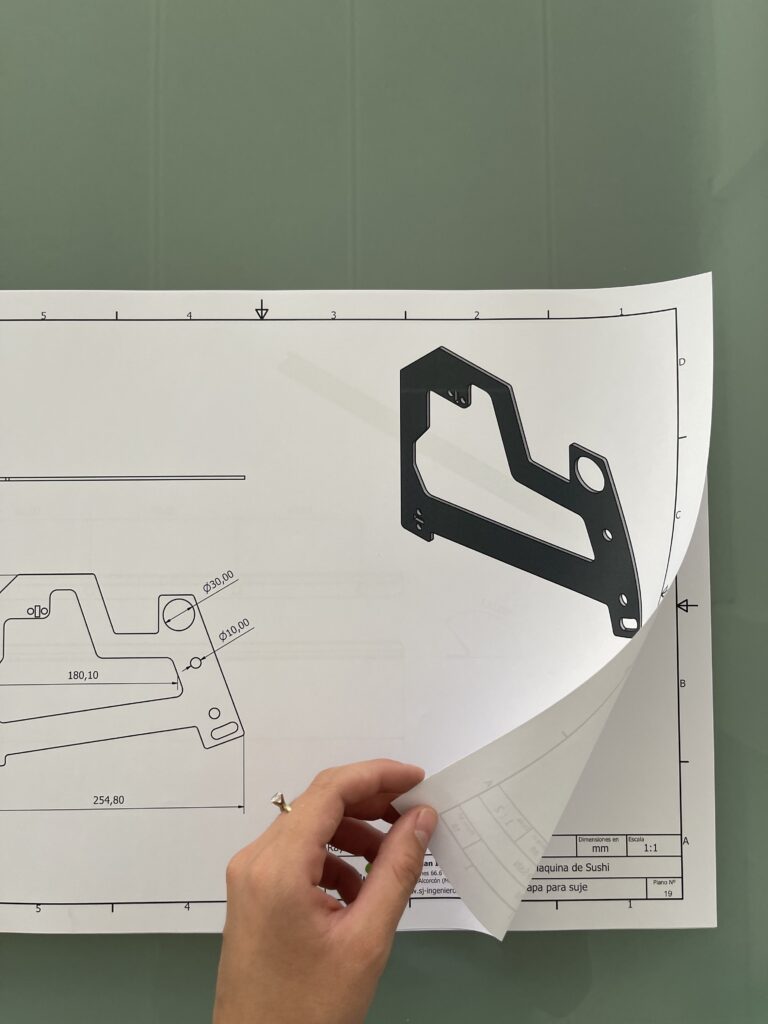
What is a product engineering study used for?
It helps mitigate the main risks and uncertainties regarding the technical feasibility of a new product.
It is not possible to draft a patent or manufacture a prototype before considering the best way to develop a product.
Who can conduct a product development study?
Not all engineers can define the best way to develop products. The product development process has many stages and steps that must be interconnected.
A good engineer can create technical solutions to make a product work.
Without a specialized team in product development strategies, it is very likely that the proposed solutions will not be the most suitable for turning the product into a successful "BUSINESS."
How much does an engineering study for a new product cost?
The cost of an engineering project for product development can range between €8,000 and €15,000. Price differences depend on the level of uncertainty and main technical challenges.
What engineering fields can create new products?
Traditional engineering fields may not be the best partners in product development. Engineering companies are often highly specialized in disciplines such as industrial design, electronics, and mechanics… To develop innovative products, it is better to work with multidisciplinary companies experienced in the creation of innovative products.
Step 4: Design and Manufacture of Functional Prototypes. A Key Step in Product Development.
Prototype meaning
The prototype is not a shoddy version of the product. The prototype is the experimental unit of a
Prototypes are experimental units that allow for the inclusion of changes, improvements, and adjustments, which ensure that the inventor's idea
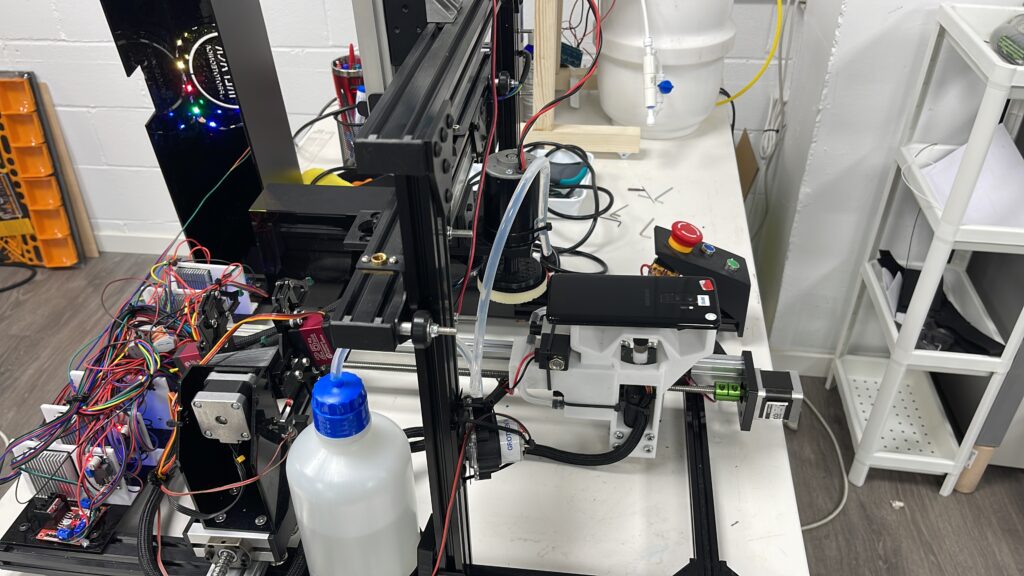
Reasons to manufacture a product prototype
To develop an invention, you need three fundamental resources: Time, Energy, and Money.
Every time you make a decision in the invention creation cycle, you draw from your reserves of three resources. For example: if you are going to register a patent, you need time, energy, and money. The same goes for any of the steps to create an invention.
If you're not retired, don't have millions of dollars to invest, and don't have all the patience in the world, you'll agree that you need to prioritize cycles that minimize the risk of your invention in the market.
Well, the main goal of manufacturing a prototype is to teach the inventor enough before exhausting the available resources to develop an innovative product.
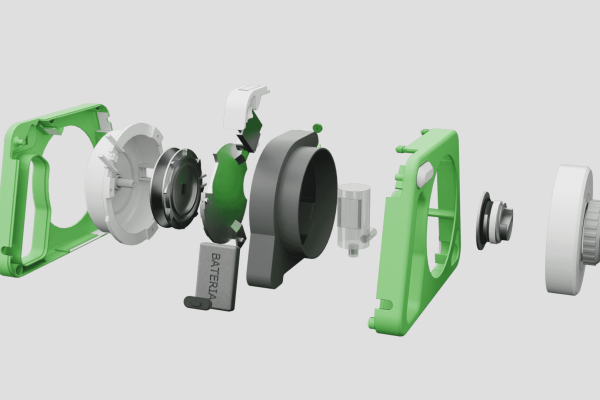
Manufacturing a prototype of a product. Impact on the value of the idea
Manufacturing a prototype of a product is a key step to accelerate the growth curve of your project's value. Although many inventors believe that the patent is the first step in the process of creating a product, it is a serious mistake.
The process of manufacturing a product prototype can be long and very costly. For this reason, it is advisable to first undertake an engineering project, which will help clarify the main hypotheses and challenges of the invention.
Be careful! Every good or bad decision you make in the process of manufacturing a product prototype will have a direct impact on your product's market opportunities. Let us explain the reasons.
How to choose companies that manufacture product prototypes?
Integration of disciplines | Technical capacity for prototyping."
To manufacture a product prototype, it is crucial for the invention manufacturing laboratory in charge to internally maintain departments that fulfill the necessary disciplines for the development of the invention.
For example, if the invention consists of developing a prototype of a household appliance, it will be crucial to have a team of experts in electronics, industrial designers, and mechanical engineers. It is essential that in each area, there is demonstrated experience in designing and manufacturing innovative prototypes.
Assigning the manufacture of a prototype to a team of industrial designers with scattered electronics and mechanical engineers (not within the same company) will add an additional level of risk, as the areas won't be able to think and work together on each of the challenges. The results of these isolated processes often end up in inefficient prototypes or poorly thought-out ones, posing a significant risk when it comes to industrializing the prototype or competing in the market.
Capability to accompany throughout the entire process | Experience in industrialization
As you already know, manufacturing a prototype is just one step in the invention creation cycle, so it's highly recommended that you choose a partner with the capability to accompany you throughout the design process, manufacturing, and launch of the innovative product.
An optimal team to commission the development of a prototype should include at least:
Specialized business team in invention development: Personnel experienced in market analysis, capable of studying competing products and patents that are part of the prior art. This team will assist you in defining the focus of innovation in the product and determining the features that will be highlighted as competitive advantages of the innovative product.
Engineering Team: It will be essential for the engineering team specialized in innovative product development to have a comprehensive understanding of the invention manufacturing cycle. With this understanding, the need to choose components democratized in the market will be taken into account, so that the necessary studies are conducted to determine the technical feasibility and economic viability of the prototype. Similarly, the engineering team will need to consider the various techniques available to industrialize the prototype, so that in the design cycle and development of electronic elements, the future possibility of manufacturing a prototype in series is contemplated.
Invention Marketing Team: The objective of the inventor may be to sell the invention along with its corresponding patents or to commercially exploit the innovative product. In either case, it is crucial to find a product development company with sufficient experience in attracting investors, capable of negotiating the sale of the patent or proposing a sales strategy to market the innovative product.
At Let´s Prototype, we have taken care to shape a structure that can assist you in the steps to create and launch a prototype to the market.
Investor Relations | Business Development
Access to financing to manufacture a prototype and not getting stuck halfway through the product creation process is one of the main obstacles faced by inventors.
It is essential that the product development company can demonstrate its experience in successfully closing cycles of financing innovative projects.
At Let's Prototype, in addition to designing a product, developing an engineering project for the invention, manufacturing prototypes, and launching products to the market, we have sufficient experience and can help you activate a cycle of attracting private capital to develop the invention.
The business development team can assist you, once the prototype manufacturing is completed, to:
- Draft the partnership agreement.
- Generate contacts with investors experienced in financing inventions.
- Creating the necessary documentation to attract financing.
- "Documenting the viability of the invention as well as the valuation of a patent and the project in general."
If you're interested in us evaluating the possibility of working together in the manufacturing of a prototype, and then supporting you through the rest of the steps, we'd be delighted to hear about your project.
Patent strategy | Counseling and commitment
After studying from an engineering project the characteristics of the prototype, it is crucial to determine the intellectual property protection strategy of an invention.
There are different ways to protect an invention. They are types of patents that may be more or less suitable depending on the elements that are truly innovative in the prototype.
Strategies to protect an invention can only be considered when there are no doubts about the technical feasibility of the prototype.
We can assist you in determining the innovative claims of the invention based on the basic engineering project itself, so that, before manufacturing a prototype, we can guide you in choosing the appropriate type of patent that corresponds.
International vision | Support in future stages.
"The launch of a new product into the market is a significant challenge for inventors."
Most inventors dream of patenting an invention, manufacturing a prototype, and selling the exploitation rights to a large industrial partner. However, very few inventors have a clear strategy for the day after having a functional prototype. For this reason, it is essential to rely on a company specialized in developing the subsequent stages of the invention creation cycle.
At Let's Prototype, after more than a decade of supporting inventors in prototyping design, prototype manufacturing, and invention launches, we have opened a physical office in the United States. Together with the invention laboratory in Madrid, we work to support the inventor through a commercial network to introduce innovative products to the market.
Manufacturing a prototype of a product or invention allows for a very close connection between the idea, the technology, and the prototype itself, with the client's vision, the ergonomics of use, as well as the technical and economic feasibility of the invention.
The manufacturing times for a product prototype are conditioned by the research load derived from the main challenges of the invention. Nevertheless, based on our experience, we can determine some estimated timeframes:
3D Prototype - 2 weeks
Prototype Mockup - 4 weeks
Functional Prototype - 90 days
Pre-Industrial Prototype - 180 days.
The price of a prototype can range between $15,000 and $30,000. It is important to note that these prices are based on our experience as a prototype manufacturing company. However, as we have already mentioned in the formula for calculating the price of a prototype, the variables "research value" and "development value" can substantially alter the prototype manufacturing price.
Before manufacturing a product prototype, in some cases, it is necessary to undergo a preliminary product design or basic engineering project. Far from being considered unnecessary or avoidable expenses, developing an engineering project helps eliminate significant risks regarding the research and development of a prototype. Therefore, before manufacturing a prototype, it is highly recommended to identify the challenges and invest in a basic engineering project where the best way to manufacture a prototype is outlined as a conclusion.
It is highly unlikely to sell an idea or patent without having a functional prototype that demonstrates the invention works. The buyer of an invention needs to verify that the invention works, solves real problems for customers, and also needs to assess the viability of manufacturing the product industrially. For this reason, it is very unlikely that you will be able to sell the patent of an invention without a functional prototype. It is advisable to present the invention to investors or patent buyers when you have a pre-industrial prototype, documentation related to the mass production process of a product positively impacts the selling value of a patent.
To manufacture a product, you can rely on industrial designers or product designers. However, based on our experience, it is advisable to engage with a company with real capability to develop multidisciplinary products. Invention manufacturing companies should incorporate various engineering departments to work together and think of the product as a whole, rather than individual parts or challenges in isolation.
The prototype is not the end of the invention creation process. It is the beginning of significant challenges associated with the possibility of commercializing an invention idea. After manufacturing a functional prototype and a pre-industrial prototype, you have two major challenges ahead: finding the right partners to manufacture the product in series.
It is possible to develop a prototype at the university, and it is highly recommended, especially when it involves innovation closely linked to new discoveries. The prototypes most suitable for the university environment are those related to discoveries in the field of chemistry. However, for the development of electronic prototypes, IoT prototypes, or inventions intended for market launch, the university is not the appropriate environment. Although the university can be a suitable environment for research, limitations on access, the need to justify resources, and the timeframes involved distance it from being an optimal inventing and prototyping laboratory for prototyping processes where immediate validations are needed to enter the market.
The best prototype companies are those that have the internal capability to integrate specialized human resources in the different areas of a prototype. In our case, as a company specializing in the manufacture of innovative products, we consider the following areas with our own personnel: mechanical engineering, industrial design, specialized textile design, IoT department, telecommunications engineering, computer engineering, mathematics, and specialization in materials research.
Another distinctive requirement of the best prototype companies is that they possess a prototype manufacturing workshop as an asset. On one hand, at Let´s Prototype, we have the engineering laboratory for researching and developing products, and additionally, both in Madrid and the United States, we have our own workshops that allow for immediate testing of engineering processes in practice.
Although study programs for product design and development have become very popular, the reality is that the various Master's programs in product development or degrees in product design and development that we have come across are insufficient compared to the actual engineering needs required to manufacture a product with high chances of success. In our humble opinion, the available studies for training as product engineers help to provide a global vision of the process of creating an innovative product, but it is not possible to equip a single profile with the capabilities in design, mathematics, mechanics, electronics, programming, etc., required as part of the product manufacturing process.
In favor of the product engineering careers we have encountered, and after having some professional profiles graduated from these programs, it is very true that the ability to visualize the product creation process equips these student profiles with fundamental skills to manage the necessary steps to create a product.
The prototype is an experimental unit of a product that allows for early validation of the potential acceptance of the innovative product in the market. In the case of technological product development with software structures, prototypes can also be created, typically mock-up prototypes to allow users to interact with different interfaces before continuing the development process.
Step 5: Intellectual Property and Patents in the Product Development Cycle.
Definition of Patents in the Product Development Process
Intellectual property protection refers to the various methods that guarantee inventors exclusive rights over their inventions.
Although they are not the only ones, there are 3 types of patents frequently used to create entry barriers and maximize business opportunities.
Patents are not a description of ideas or inventions. Patents are the result of the innovation and product development process.
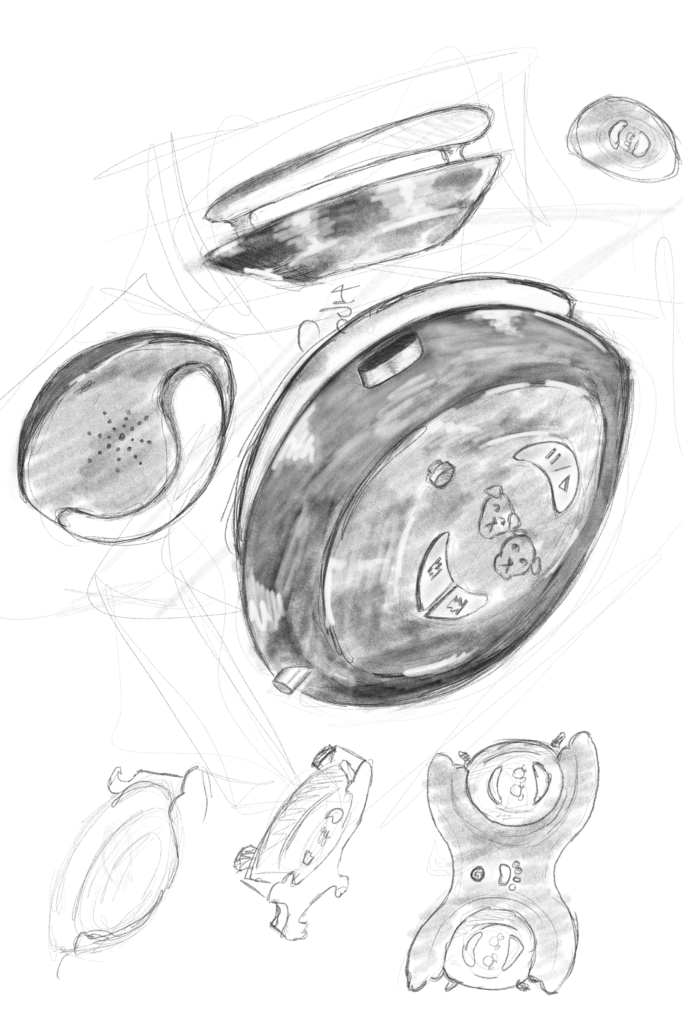
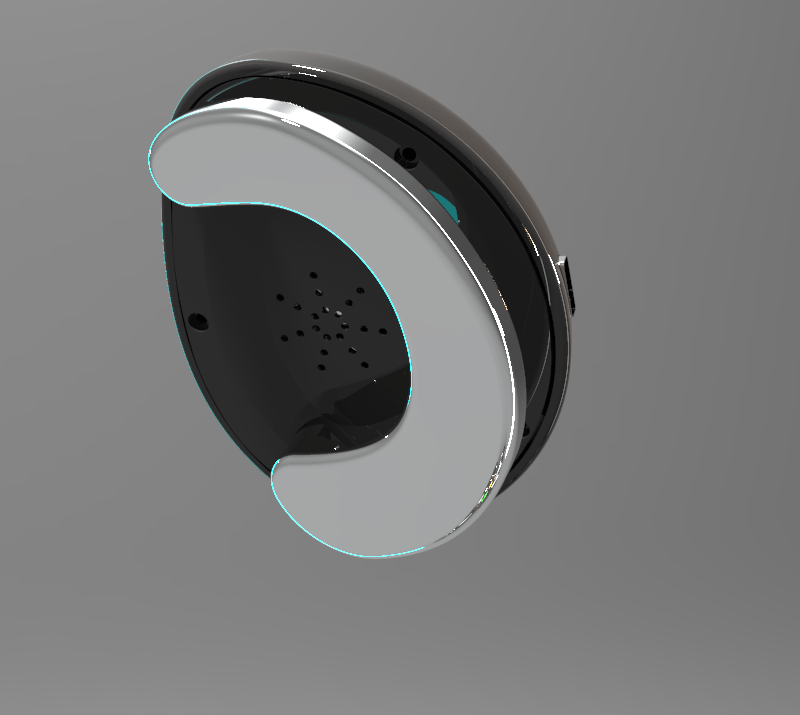
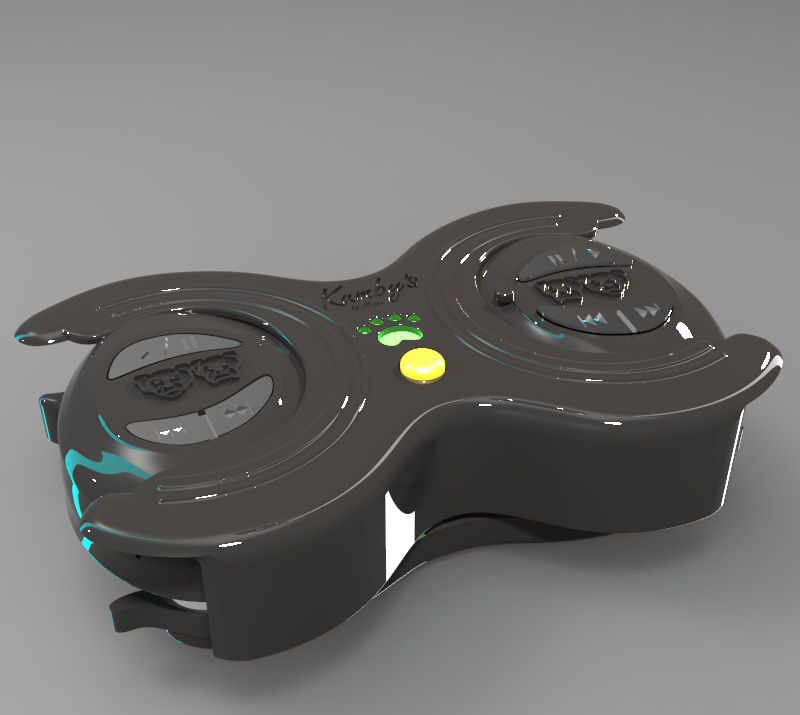
Innovative products should be patented so that their inventors can have exclusive exploitation rights for their products for 20 years.
The best time to patent a product is when you are certain that your innovation has reached a point of no return. Patents cannot be edited. Registering an idea too early can leave the innovative product development unprotected.
Any individual, company, or institution can register a patent. They can register patents directly or work with an intellectual property expert or a patent attorney.
The best place to register a patent for a product is the United States. Patenting in the USA is a simple, fast, and highly secure process. US patents hold much more value than patents in countries with a depressed economic system or smaller populations.
Calculate the Value of Your Patent
Are you ready to find out the estimated value of your Patent or Utility Model?
Step 6: Pre-Series in the Process of Developing Innovative Products.
Definición de pre-series.
La pre-series son réplicas de los prototipos funcionales. El objetivo principal, es conseguir unidades suficientes para realizar test de uso de los prototipos, antes de cualquier inversión en el proceso de industrialización de los productos.
The objective of pre-series in the product development process is not to make money from the sale of units. The sole purpose of the pre-series is to help determine whether we are close to achieving a product that meets the needs of potential customers.
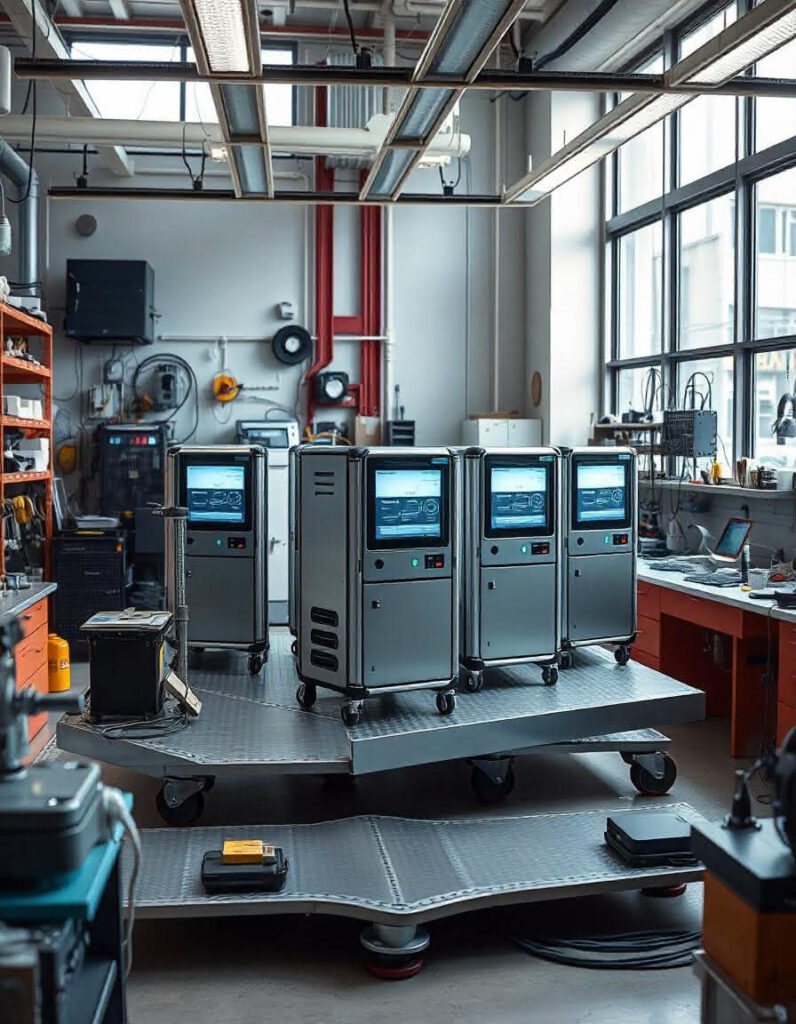
A product pre-series is a controlled replication of a prototype in a very limited quantity. Pre-series are useful for conducting commercial tests that help steer the course of innovation.
Skipping the pre-series in the development process of an innovative product is risky. Entrepreneurs make serious mistakes when they industrialize a product before testing it with a pre-series.
You can now manufacture products in Madrid at our prototyping laboratories. We have invention factories in Madrid and Miami to support you throughout the entire product development process.
Step 7: Commercial Testing in Product Development.
UX Testing Definition
User experience tests are the first interaction scenario for potential customers with a device very similar to the final product.
The purpose of UX tests on prototypes is to validate whether the steps taken in the product development cycle have been correct up to this point.
The learning gained from the interaction between product prototype versions and early users will be essential for a product optimization cycle before starting the process of
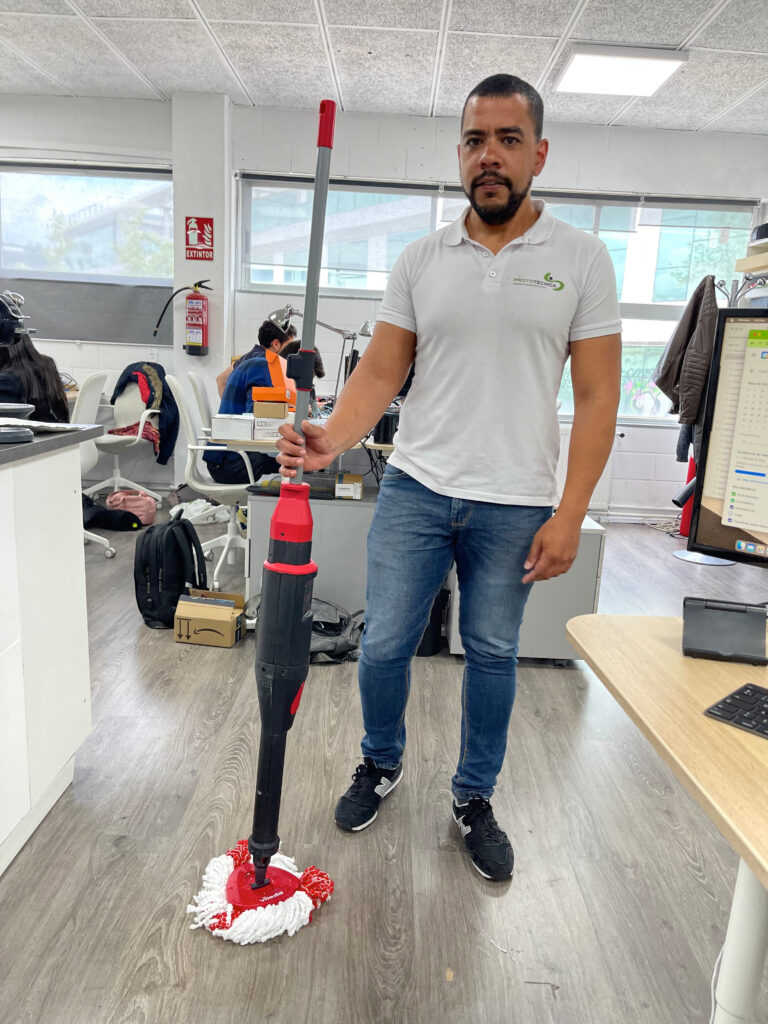
Step 8: Product Optimization as Part of the Steps to Develop an Invention.
Product Optimization Cycle.
The product optimization cycle refers to a continuous process in which a product evolves in a coordinated manner.
The most common mistake in the process of optimizing innovative products is to guide the optimization solely by the inventor's vision.
At this stage, the inventor's vision could hinder the connection and acceptance of the developed product in the market.
The only determining criterion for the product optimization cycles in the post-prototype stages should be customer feedback.
The best outcome of a product optimization cycle, according to the steps for developing a product, is the engagement of private investors or industrial partners to industrialize the product.
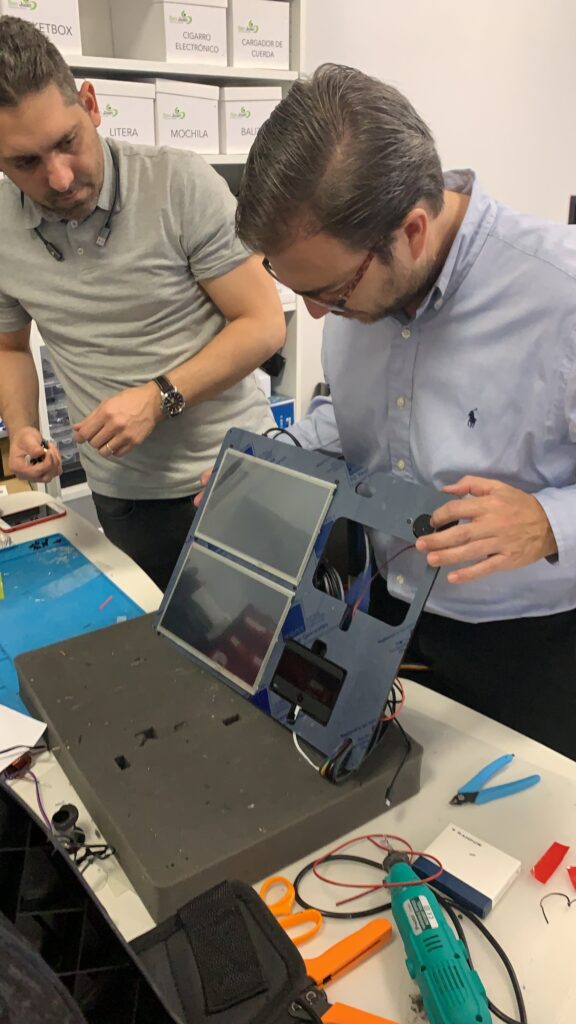
Step 9: Engaging Investors for Product Development.
Investors for Innovative Product Development.
Investing in a project for the development of an innovative product is a risky decision.
Comprender la visión y percepción de riesgo de los inversores, es clave para completar esta etapa con éxito.
El proceso de desarrollo de productos innovadores, se financia como una carrera de relevos, donde los fondos participan en función de que se elimina la incertidumbre asociada al proceso de desarrollo de productos.
Paso 10: Fabricación industrial
Definición fabricación industrial
The industrial manufacturing of a product refers to the moment when the parts and components of a product, as well as its assembly process, are fully optimized and carried out by high-precision industrial machines.
The manufacturing costs of the product define to some extent its chances of success and economic margin.
It is impossible to reach a stage of competitive industrialization if each of the previous stages has not been carried out with sufficient rigor.
Our business is not to patent your invention, it is to make it a reality
Registering patents on inventions has become big business. But it's not ours. In Let's Prototype you will find an ally to turn your idea into a profitable business.
The time to bring your ideas to life is now. We accompany you throughout the entire process: from idea to product.
San Juan Ingenieros, S. L, is the owner of the domain www.letsprototype.com, and in accordance with the General Data Protection Regulation (EU 1679/2016), we will process your data exclusively to handle your information request. You have the right to rectify or request the deletion of your data at any time via hello@letsprototype.com.
Capabilities for manufacturing product prototypes.
3D Printing and Design
We will be able to manufacture any part or component of the prototype swiftly. We have specialists in material study and selection. Every day, we utilize.
- Biodegradable materials
- Degradable materials
- Flexible materials
- Silicones
- Food contact materials
- Textiles
- Rigid plastics
- Wood
- Metals
We Design and Manufacture PCBs
We have the capability to design and manufacture printed circuit boards (PCBs) optimized for your prototype. We will select the most suitable components and subsequently industrialize your PCB.
Software Development
We can develop platforms and mobile applications optimized for your prototype. With a single point of contact, we will ensure that your hardware prototype is accompanied by the most suitable software.
Manufacturing of Prototypes Using Molding Techniques
Before facing significant investments in molds for large-scale production, we can manufacture a prototype using artisanal molding techniques. With these techniques, your prototype will have a very similar appearance to the final product.
Design and Manufacturing of Complex Mechanisms
You will have trained professionals to create and manufacture complex mechanisms for prototypes, regardless of the required materials. We will ensure the viability of the prototype when industrializing its production.
Feasibility Studies. Basic Engineering
We will study your project’s technical feasibility, simulating digitally any possible working scenarios. We will share with you the resulting data, along with any variations to achieve optimal operation.
